Health insurance plans need to provide policy holders with a sufficient number of in-network providers and services. This is called network adequacy, and it ensures that patients can access necessary medical care when they need it, without having to travel far.
Monitoring network adequacy involves large datasets and complex calculations to confirm that health plan networks—including doctors, hospitals, and specialized centers—are within reach for all members. Understanding network adequacy is challenging due to the stringent federal and state regulations that govern health care.
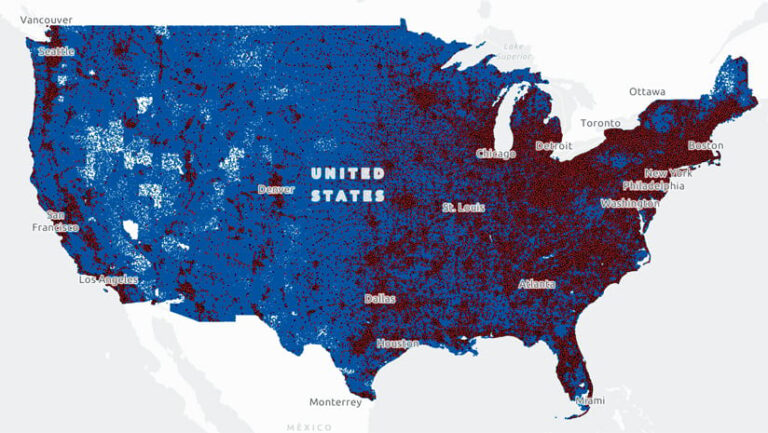
To simplify the process of calculating network adequacy, health-care companies can employ advanced tools such as ArcGIS GeoAnalytics Engine. This library for Apache Spark, which provides a collection of spatial SQL functions and analysis tools, efficiently processes large geospatial datasets and enables users to apply smart spatial heuristics—ways to minimize the number of calculations that need to be made.
For perspective, a brute-force approach to calculating network adequacy might require GeoAnalytics Engine to perform up to 768 trillion network calculations at the national level. Even determining network adequacy for regional health-care plans often requires conducting billions of calculations. But techniques such as using spatial partitioning and creating service areas can optimize the geographic relationship between patients and providers and make it easier for health-care organizations to run these calculations more regularly. And that’s what GeoAnalytics Engine does well.
How to Break Down a Very Large Issue
To demonstrate how health-care organizations can tackle this issue, let’s conduct a simulated study on primary care providers in California and the organizations’ distance standards.
California has more than 13 million households. In the network we’re simulating, there are more than 24,000 health-care providers. Determining the network adequacy of this group of providers yields well over 300 billion potential calculations—so this is a very large issue.
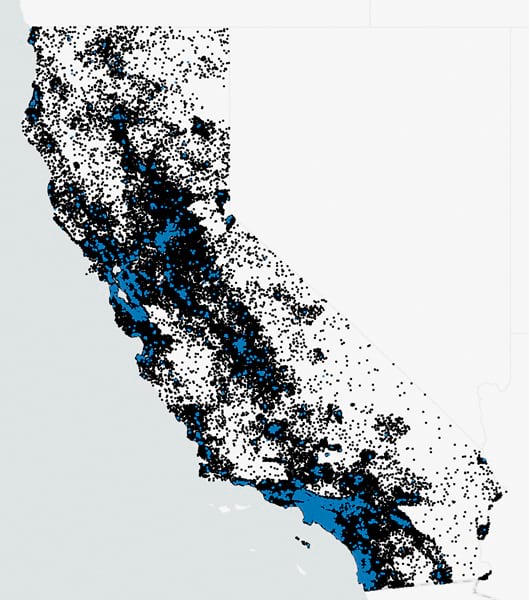
To explore this problem at scale, we’ll leverage the elasticity of GeoAnalytics Engine along with the scalable computing environment provided by the Spark-based Databricks Data Intelligence Platform. In addition to using scalable spatial functions and tools that take advantage of Spark’s distributed processing capabilities, we’ll use smart spatial heuristics such as using partitioning, creating service areas, and employing binning to make the problem smaller.
Smart Spatial Partitioning
The first heuristic we can apply to this problem is Euclidean distance—the measurement of the straight-line distance between two points—to identify which facilities (representing one or more providers) are near enough to each county to potentially demonstrate network adequacy. For example, if a health-care provider requires that 90 percent of its members in a particular county have a primary care provider within 15 miles of where they live, then all facilities offering primary care that are located in the county as well as those up to 15 miles away from it could meet that standard.
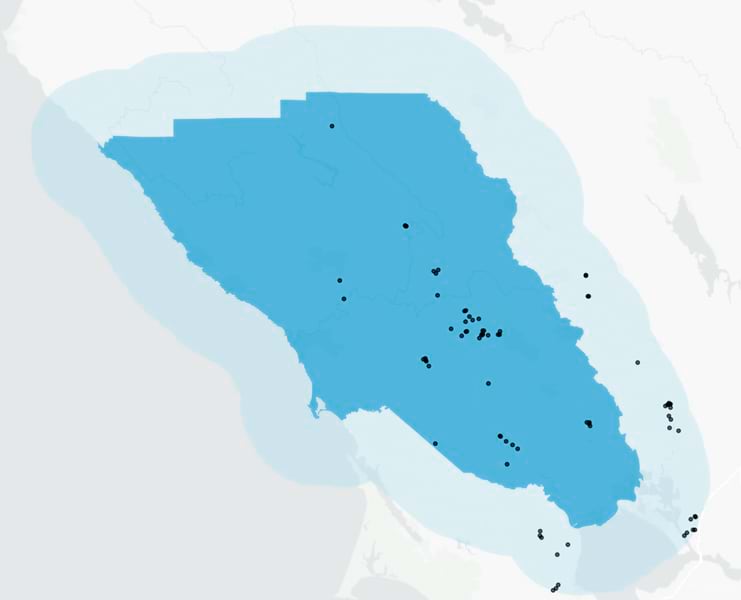
To identify these providers, we first use GeoAnalytics Engine to create buffers around each county that corresponds to this accessibility standard. Then we apply a spatial join to match which facilities are within 15 miles of each county’s border. The calculation shows how many facilities there are and includes the primary care providers who practice there.
By matching each facility that is inside a county or up to 15 miles from it, we have substantially reduced the number of origin-destination calculations—or how far patients living on the edge of each county would have to drive to get to a medical provider—needed to complete the adequacy analysis. Applying a brute-force approach to this would have required more than 300 billion calculations. Snapping providers to facilities would have reduced that to around 54.2 billion calculations. But employing smart partitioning using county buffers reduces the number of required calculations to 4.5 billion, eliminating more than 90 percent of the calculations that would have had to be done using either of the other methods.
Creating Service Areas
In many cases, network adequacy is determined based on Boolean criteria, which employ true-or-false logic to measure whether a provider is located within or outside a specified distance. In our example, if 90 percent of members must have a primary care provider within 15 miles of their home, then we can measure adequacy by distinguishing how many members are within 15 miles of a provider compared to how many members are farther away. Rather than calculating the distance between each member and each provider, we can use GeoAnalytics Engine to create service areas to delineate the 15-mile boundary around each provider.
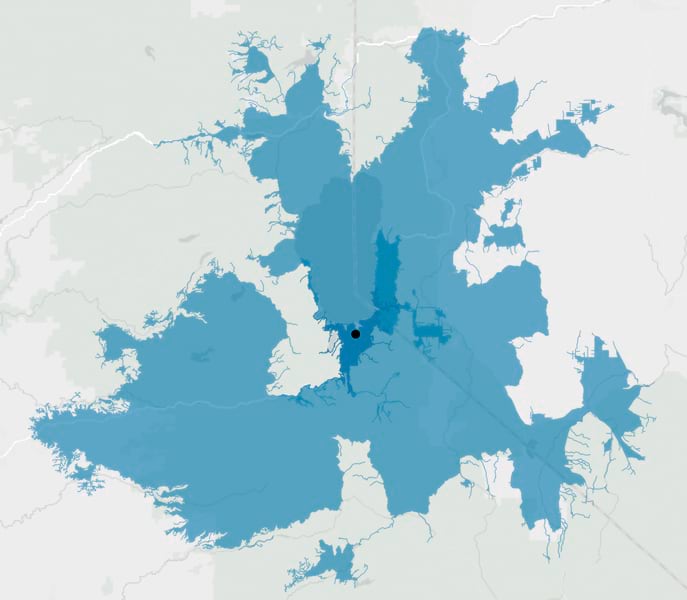
By applying the Spatiotemporal Join tool or the SQL function ST_Within, these service areas can be dissolved together into one geometry to determine who is inside versus outside the service area. Moreover, when nearby counties have the same standard, we can use the same service area to perform multiple county-level analyses instead of analyzing each county individually.
Employing this heuristic, followed by a spatial join and a dissolve, to determine which households are within the service area and which are not means that 4,000 service area calculations need to be done—rather than hundreds of millions of network distance calculations, which would then need to be filtered.
Aggregating Points Using Bins
Instead of using spatial joins and dissolves, we can apply another heuristic to simplify our problem: We can create a hexagon tessellation grid—a grid of cells with an area and shape that cover a specified extent—to calculate the average distance or time it takes to travel across an entire network.
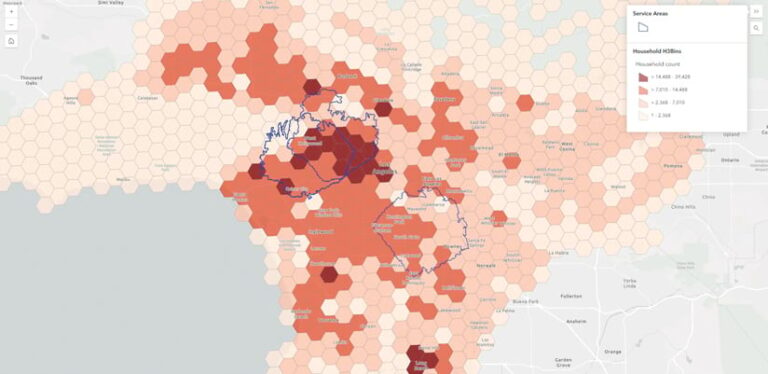
GeoAnalytics Engine provides SQL functions such as ST_H3Bin and tools like Aggregate Points that use standardized hexagon bins to aggregate, for example, the number of insurance plan members in a bin. This method simplifies the process of calculating network adequacy by allowing attribute joins based on bin IDs.
Let’s say we have 50 bins with 100 members in each of them, plus 20 providers. Performing a spatial join would involve testing 5,000 member points against 20 provider service areas, which would warrant 100,000 comparisons. With bins, however, we only have to test 50 bin centers against 20 provider bins, which results in making 1,000 comparisons. Then we multiply the results for each bin by the number of members. This reduces the computational load significantly compared to performing spatial joins.
Faster, More Precise Results
Using GeoAnalytics Engine to calculate network adequacy for health-care plans speeds up the analysis process and enhances the precision of the results. It is a valuable tool for health-care companies to use to improve service accessibility.
Learn more about how to conduct both simple and complex analyses using GeoAnalytics Engine.

